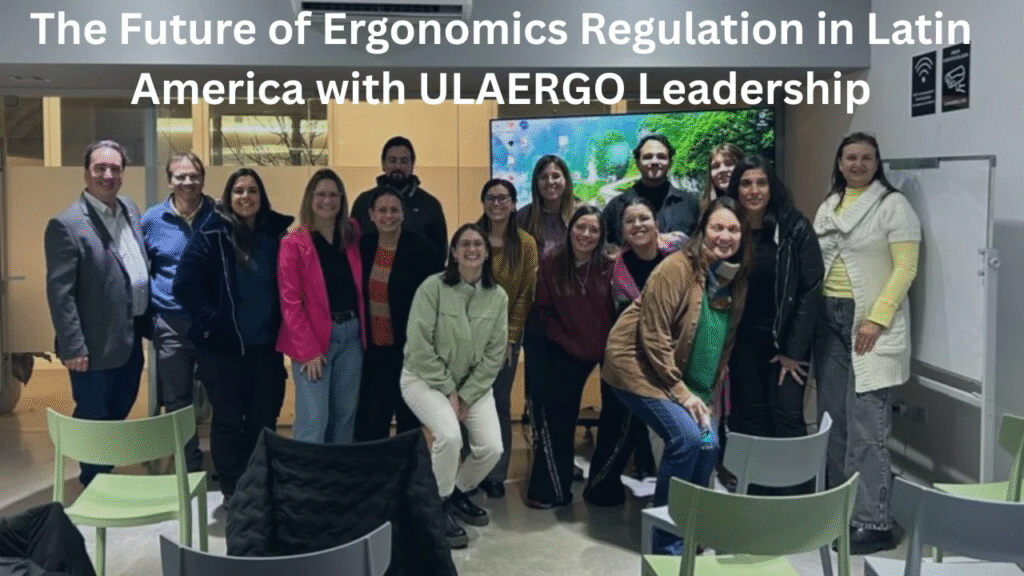
Introduction
Within ULAERGO (Latin American Union of Ergonomics), the Academic Committee and Professional Committee serve as two foundational pillars of the organization’s mission. While they focus on different spheres—education and research versus practice and application—their interaction forms the core of ULAERGO’s strategic impact across Latin America. This article explores how these two committees collaborate, coordinate, and co-develop initiatives that bridge theory and practice in regional ergonomics.
From curriculum development to workplace implementation, the synergy between these committees ensures that academic advancements inform professional standards, while field experience enriches education and research. Their joint actions have led to measurable progress in harmonizing ergonomic efforts across sectors and countries.
Distinct Roles of Each Committee
| Committee | Primary Focus |
|---|---|
| Academic Committee | Curriculum development, academic research, training standards |
| Professional Committee | Practice guidelines, industry collaboration, policy advising |
Though distinct in mandates, these committees are interconnected by purpose—developing ergonomics as both a science and a practical discipline.
Key Areas of Interaction
1. Curriculum and Competency Alignment
- The Academic Committee drafts model curricula for undergraduate and postgraduate ergonomics programs.
- The Professional Committee evaluates whether graduates meet real-world performance expectations.
- Together, they ensure graduates are job-ready and that educational institutions are aligned with occupational demands.
2. Joint Conferences and Seminars
- Co-host academic-professional hybrid events where researchers and practitioners present side-by-side.
- Provide platforms for students, educators, and professionals to exchange insights.
3. Research-to-Practice Projects
- Academic members initiate research; professionals pilot them in real settings.
- Examples include:
- Human-centered design in agriculture
- Remote work ergonomics during the COVID-19 pandemic
4. Credentialing and Certification Standards
- Both committees work together to define Latin American certification benchmarks for ergonomics professionals.
- Academic input ensures theoretical robustness; professional input ensures field validity.
5. Policy Advocacy and White Papers
- Collaborative production of position papers submitted to ministries of labor, health, and education.
- Influenced regulations in countries like Colombia, Argentina, and Brazil.
Table: Collaborative Initiatives and Their Impacts
| Initiative | Description | Impact |
|---|---|---|
| Model Postgraduate Curriculum (2016) | Developed jointly for master’s programs in ergonomics | Adopted by 10 universities in 7 countries |
| Regional Conference Tracks (2018–2024) | Co-organized academic-practice presentations in major events | Boosted interdisciplinary participation by 40% |
| COVID Remote Work Ergonomics Study (2020) | Academic–professional data collection and toolkit creation | Used by over 1,200 organizations across Latin America |
| Joint Certification Criteria (2022) | Established academic + field standards for professional roles | Recognized by regional occupational safety associations |
| Latin American Ergonomics Glossary (2024) | Unified key academic and professional terminology | Facilitated bilingual training across borders |
Structural Mechanisms That Support Collaboration
ULAERGO has institutionalized this collaboration through shared membership and cross-reporting:
| Mechanism | Function |
|---|---|
| Liaisons Between Committees | Each committee appoints a liaison to the other for agenda alignment |
| Joint Annual Sessions | Both committees meet to review overlapping goals |
| Shared Digital Platform | Use of ULAERGO’s knowledge-sharing intranet for document exchange |
| Cross-invited External Experts | Speakers and consultants rotate between academic and professional forums |
| Shared Review Boards | Jointly review research proposals or certification applications |
Benefits of Academic-Professional Synergy
- Theory-Driven Practice
Practitioners benefit from research-based strategies that enhance safety and productivity. - Practice-Informed Academia
Educators gain field data and case studies to enrich coursework. - Stronger Policy Influence
Unified academic-professional advocacy gives ULAERGO more credibility with governments and industries. - Workforce Readiness
Graduates from ergonomic programs are better equipped for real-world roles. - Regional Standardization
Shared efforts lead to cohesive ergonomic norms and benchmarks across countries.
Overview Table: Dimensions of Interaction
| Dimension | Academic Committee Contribution | Professional Committee Contribution |
|---|---|---|
| Curriculum Design | Theoretical structure and pedagogy | Skills validation and job relevance |
| Research and Innovation | Project design and data analysis | Field trials and feedback |
| Events and Training | Workshops and research presentation | Practical case studies and demonstrations |
| Policy Formulation | Evidence-based frameworks | Applied standards and legal compliance |
| Credentialing and Ethics | Academic requirements | Professional conduct and licensing |
Challenges in Collaboration
Despite their success, the committees face some obstacles:
- Terminology Gaps: Differences in jargon can hinder communication.
- Resource Disparities: Academic institutions often lack funding to scale professional programs.
- Time Constraints: Professionals may struggle to contribute consistently due to workload.
To mitigate these, ULAERGO is developing:
- A bilingual ergonomics dictionary
- Funding pools for joint academic-professional pilot projects
- Flexible participation models for busy professionals
FAQs
1. Can students participate in both committees?
Students may contribute via academic subcommittees or conference forums but don’t serve as core voting members.
2. Are the committees independent of national ergonomic societies?
No, many members are also leaders in their respective national organizations, creating a bridge between national and regional goals.
3. What is the outcome of this collaboration?
A unified framework for regional ergonomics that balances academic integrity with workplace reality.
Conclusion
ULAERGO’s Academic and Professional Committees are more than parallel bodies—they are interactive engines of transformation. By combining educational depth with field pragmatism, they co-create standards, resources, and strategies that impact every level of ergonomic development in Latin America. Their partnership sets a precedent not just for regional ergonomics, but for interdisciplinary collaboration in international organizations.

